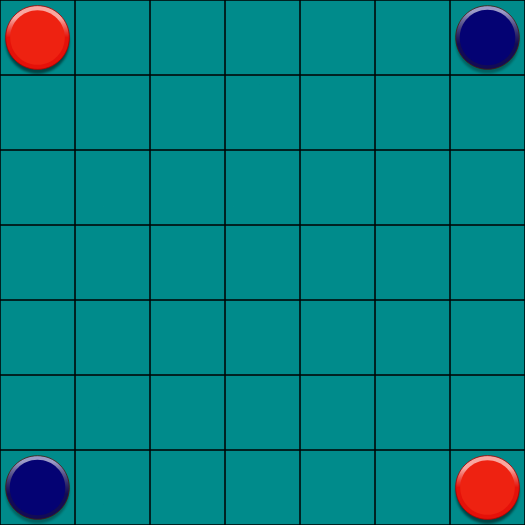 Ataxx
Ataxx

Ataxx is a strategy video game published in arcades by Leland Corporation in 1990. Two players compete on a seven-by-seven square grid. The object of the game is for a player to have a majority of the pieces on the board at the end of the game, by converting as many of their opponent's pieces as possible. In a single-player game, the opponents are "bio-invaders from a different dimension."
The concept was invented earlier by Dave Crummack and Craig Galley for the unreleased 1988 video game Infection. Virgin Mastertronic licensed it to Leland as well as using the design in its own Spot: The Video Game, released the same year as Ataxx. There are numerous independently developed clones. Although Ataxx was sold as a video game and not with a physical game board, it can be played with a Reversi set.
Rules
Each player begins with two pieces, red and blue, for the first player and second player respectively. The game starts with the four pieces on the four corners of the board, with red on the top left and bottom right and blue on the other two. Red moves first.
During their turn, players move one of their pieces either one or two spaces in any direction. Diagonal distances are equivalent to orthogonal distances, i.e. it is legal to move to a square whose relative position is two squares away both vertically and horizontally. If the destination is adjacent to the source, a new piece is created on the empty departure square. Otherwise, the piece on the source moves to the destination. After the move, all of the opponent player's pieces adjacent to the destination square are converted to the color of the moving player. Players must move unless no legal move is possible, in which case they must pass.
The game ends when all squares have been filled or one of the players has no remaining pieces. The player with the most pieces wins. A draw may occur when the number of squares is even, either from non-playable squares or nonstandard sizes having an even number of squares. After the third repetition, the game is adjudicated by material counting.